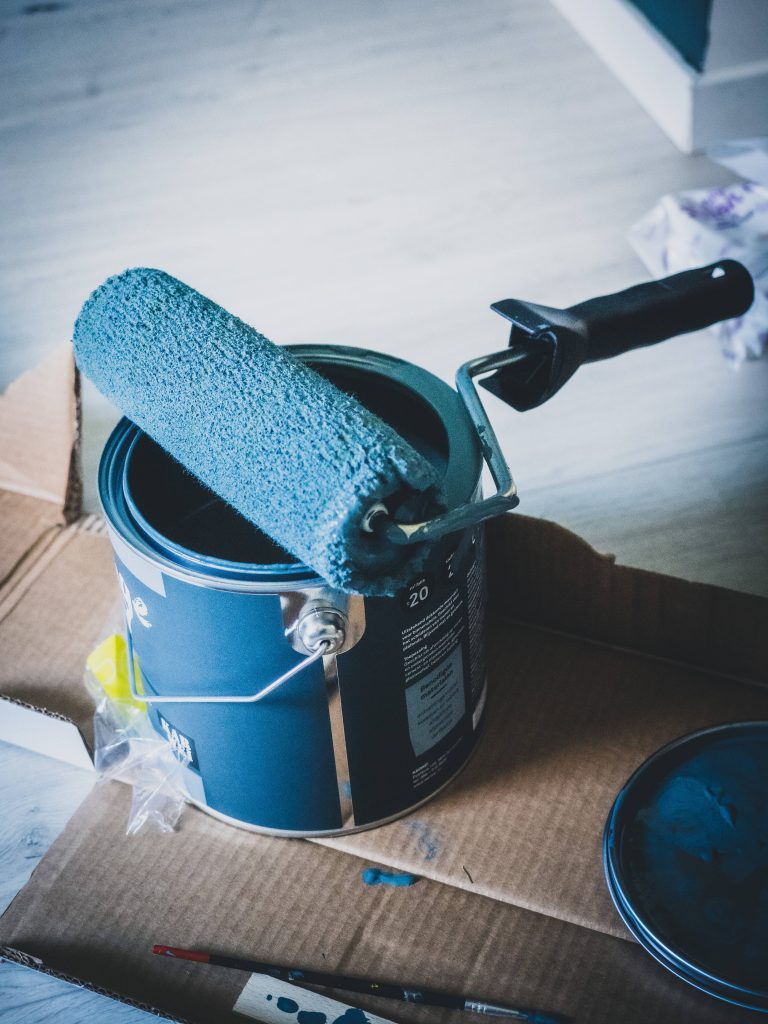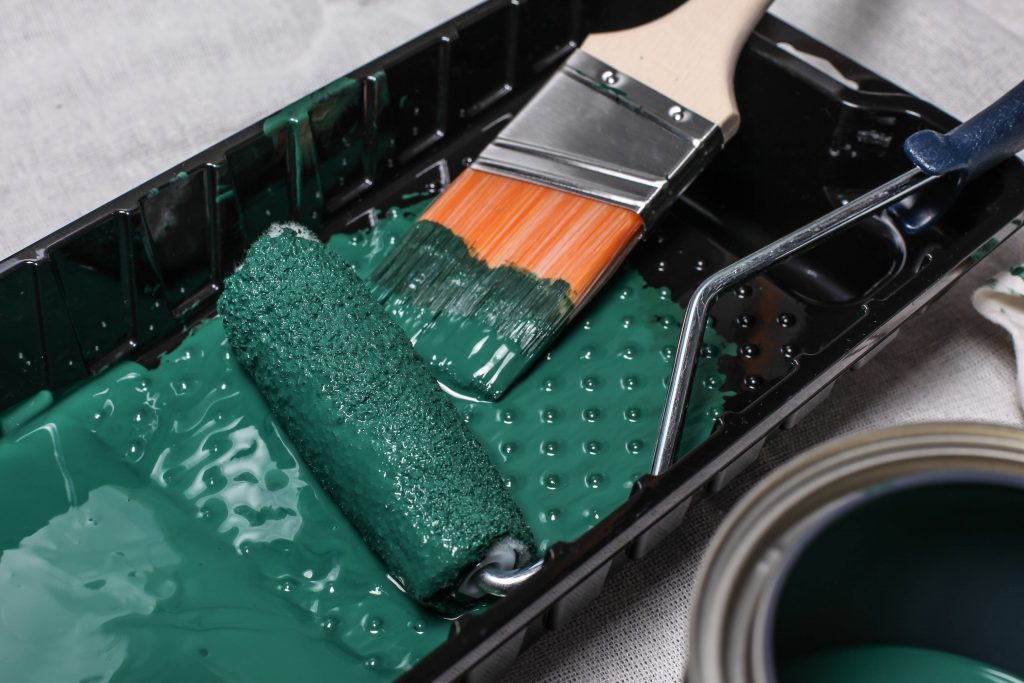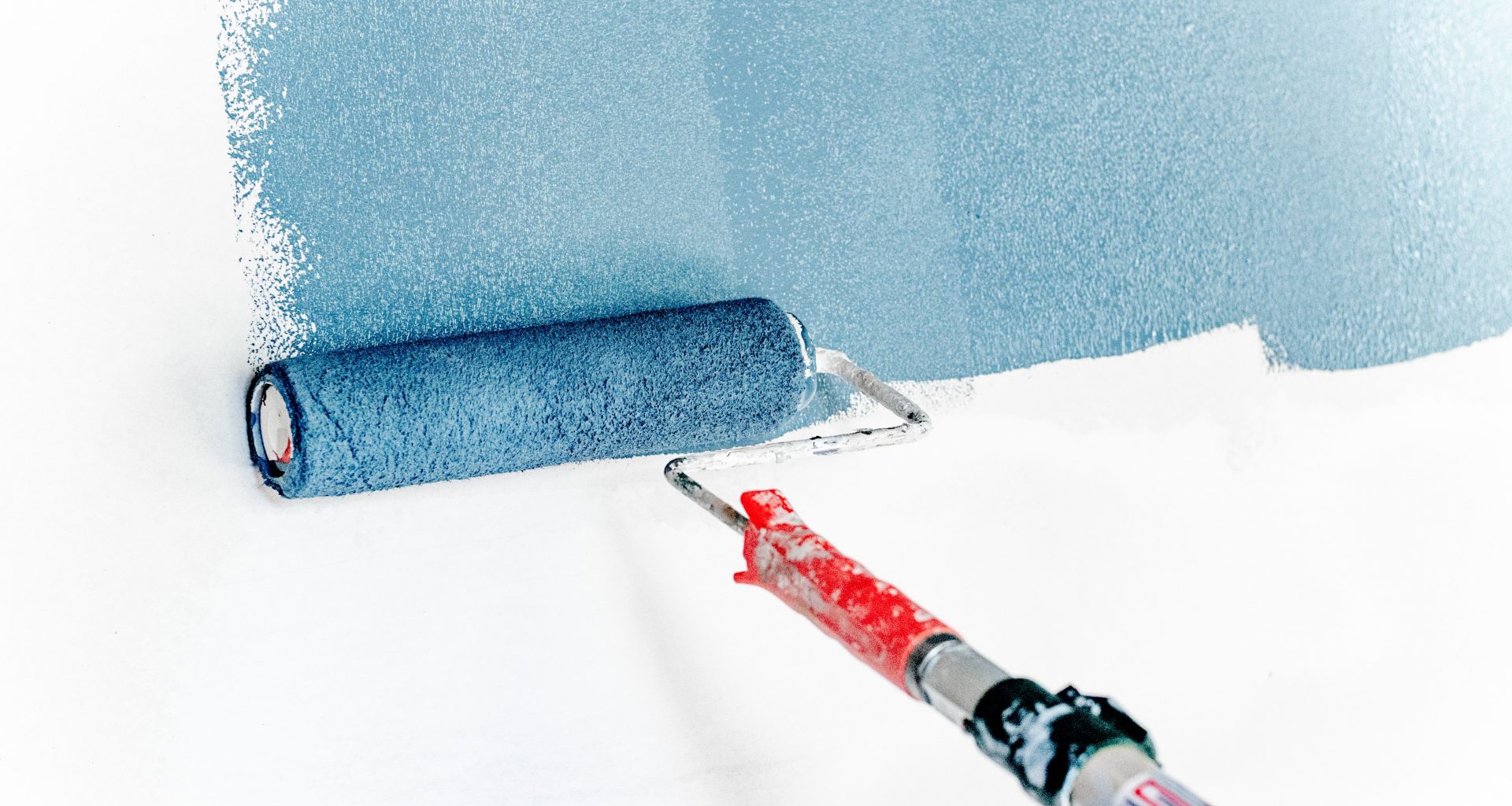Introduction
Knowing how to clean paint rollers properly is essential if you want them to last a long time. If not kept clean after each use, rollers can deteriorate. It can also be expensive to keep replacing paint rollers when the paint dries out on them. This is especially the case if you’re doing a big project, like painting a whole room. This is why learning to clean properly is important.
In this article, I take you through the 3 easy steps to clean paint rollers properly. We’ve already got a great article on how to clean paint brushes. However, rollers are a little different. So, read on to find out more!
Step 1 – Get Rid Of Excess Paint
The first important step in the process of cleaning paint rollers properly is removing excess paint. Start by scraping the paint off as best you can with a tool like a putty knife. Scrape the paint back into the paint bucket. This will save a surprisingly large amount of paint, meaning less goes to waste and you won’t need to buy quite as much. Try to just remove wet paint: don’t use enough force to scrape any dried paint off the roller.

Roll Away To Clean Paint Rollers Properly
Even after you’ve scraped the paint roller, there is likely still some paint clinging onto it. You can get some of this off by rolling it. Roll the paint onto part of the wall you’re painting that has less paint or has not been done yet. Alternatively, roll it onto some newspaper. The more paint you get off this way, the less cleaning you have to do. This is the first essential step towards making sure you clean paint rollers properly.
Step 2 – Clean The Roller Frame And Tray
Once you’ve got the excess paint off the roller, you can begin the full cleaning process. This includes the roller frame and tray. Remove the roller cover from the frame. If you’ve used latex paints, put the frame immediately into a bucket of warm, soapy water and scrub with a brush with short, stiff bristles. Castile soap is a great product to use. If you’re using oil paint, get a good paint thinner and clean the roller frame with this and a rag.

For the tray, latex paint can be left to dry and then peeled off in a sheet. Oil paint again needs cleaning with a rag and solvent. You might also need your putty knife to scrape any tough patches. In both cases, wash the tray with some warm, soapy water once you’ve removed the paint.
Step 3 – Clean Paint Roller Covers
Finally, it’s time to clean the paint roller covers. There are two main methods which you can use.
Method 1 – Bucket And Soap Or Solvent
For latex paint, fill a bucket with warm, soapy water and submerge the roller cover. Use your hands to scrub the paint out. Rinse the roller off in clean water in a bucket or with a hose. Leave the roller to dry standing on its end.
When using oil paint, get a small container with enough room to submerge the roller. Fill it with paint thinner or solvent. Next, submerge the roller in the solvent. Use some gloves to cover your hands and scrub the paint out of the roller. Pour the solvent into a disposable bottle and leave to let the paint in it settle. You can pour out the clean solvent into a container to reuse. Any dirty solvent at the end should be disposed of according to manufacturer instructions. Rinse the roller with clean water and leave it to dry on its end.
Whichever paint you have used, clean the container used for washing with soapy water and leave to dry.
Method 2 – Washing Machine
Hand-cleaning is the best method to clean paint rollers properly, however, you can also use a washing machine. If you’ve not got expensive rollers, you might want to use this method.
After removing excess paint, put the paint roller covers into the washing machine. Select a cool wash. You can add some vinegar to the detergent drawer if you want, but it’s not essential. To avoid damage to your washing machine, rinse the rollers before putting them in. Alternatively, try method 1 and then use this method for a second, more thorough clean.
Conclusion
As you can see, cleaning paint rollers is quite simple. The method differs slightly depending on if you’ve used latex- or oil-based paints, but it’s easy to follow either way. I’d recommend sticking to hand washing, or at least using hand washing as step 1 or 2, to avoid damage to your rollers and also your washing machine.






